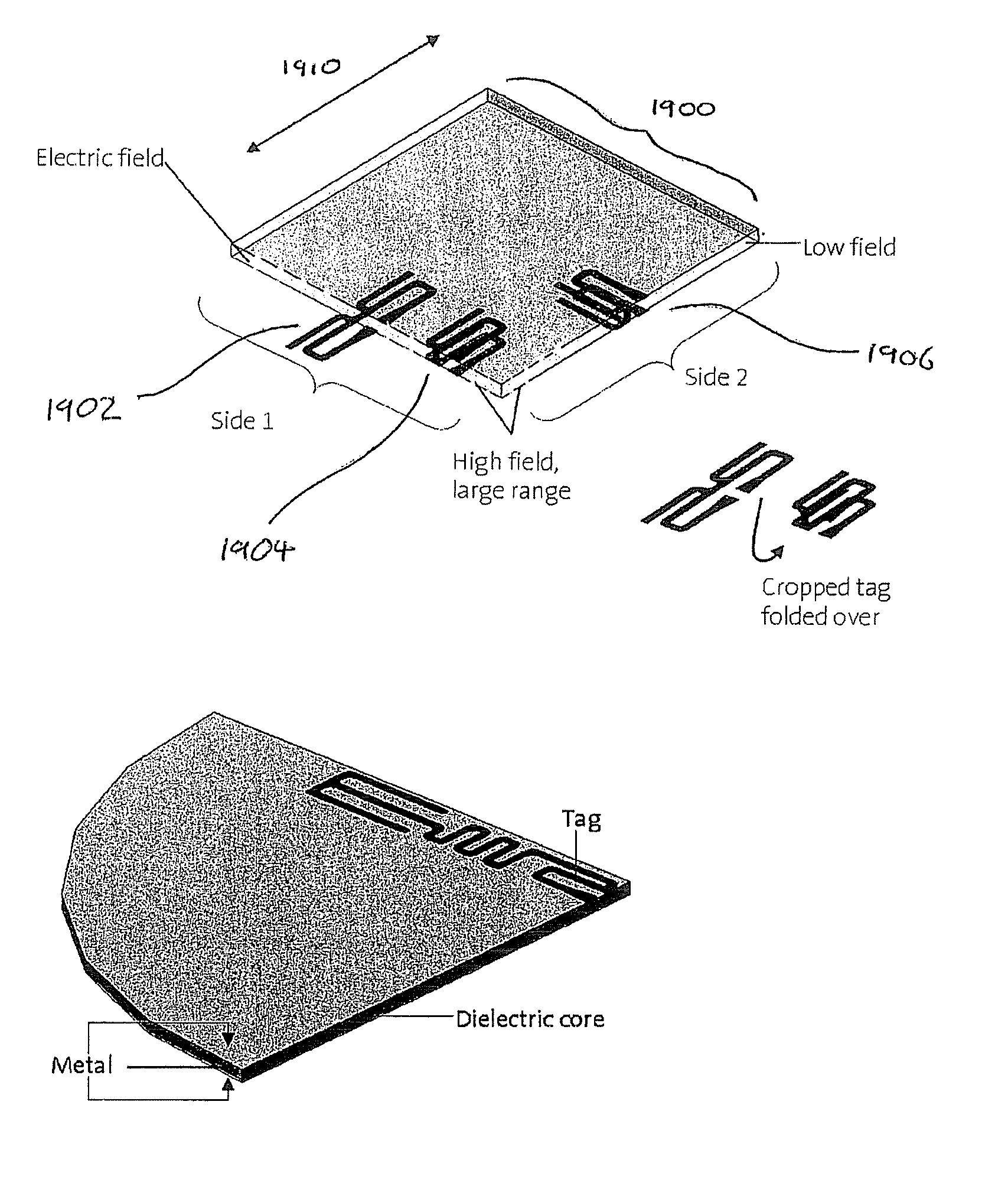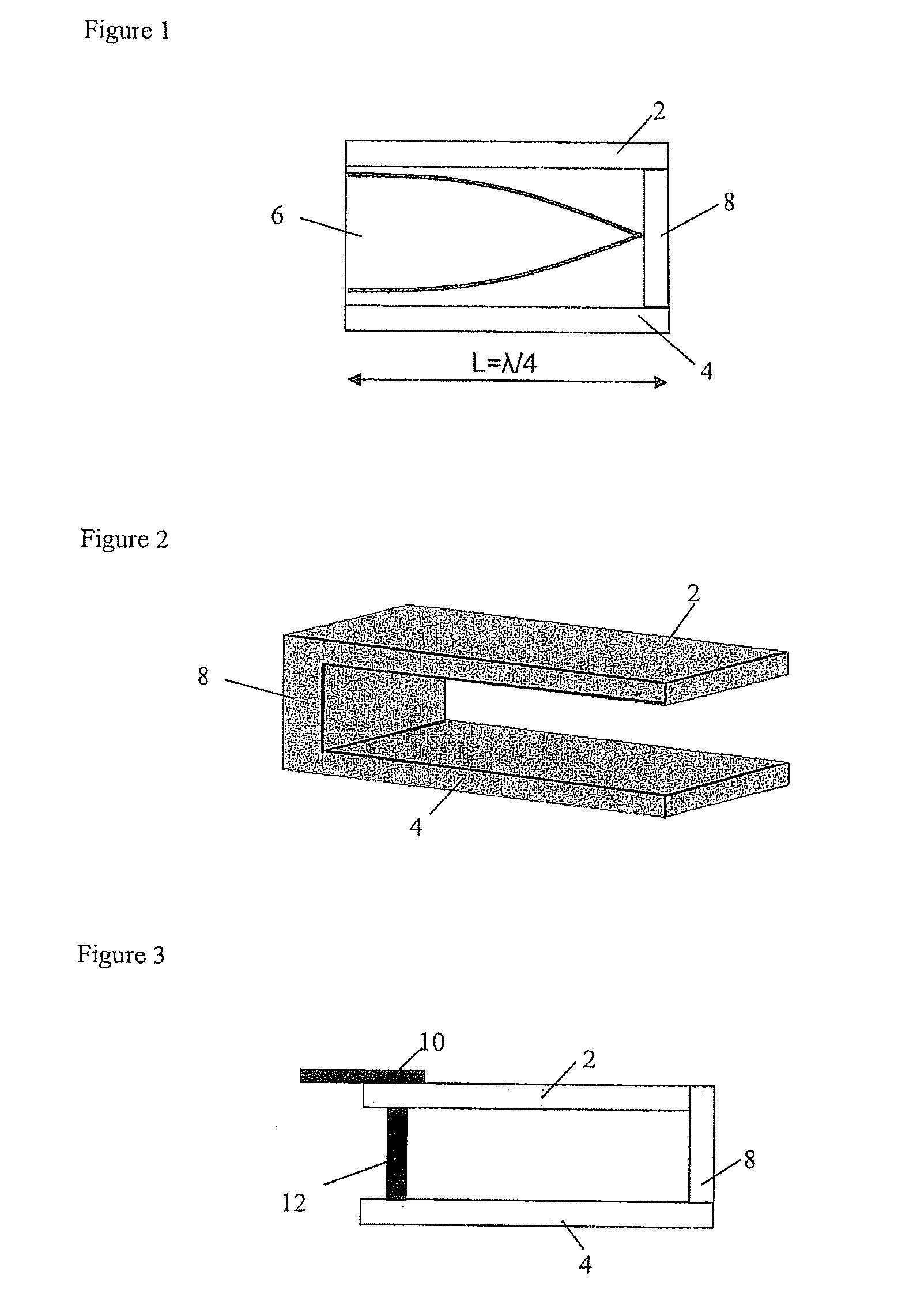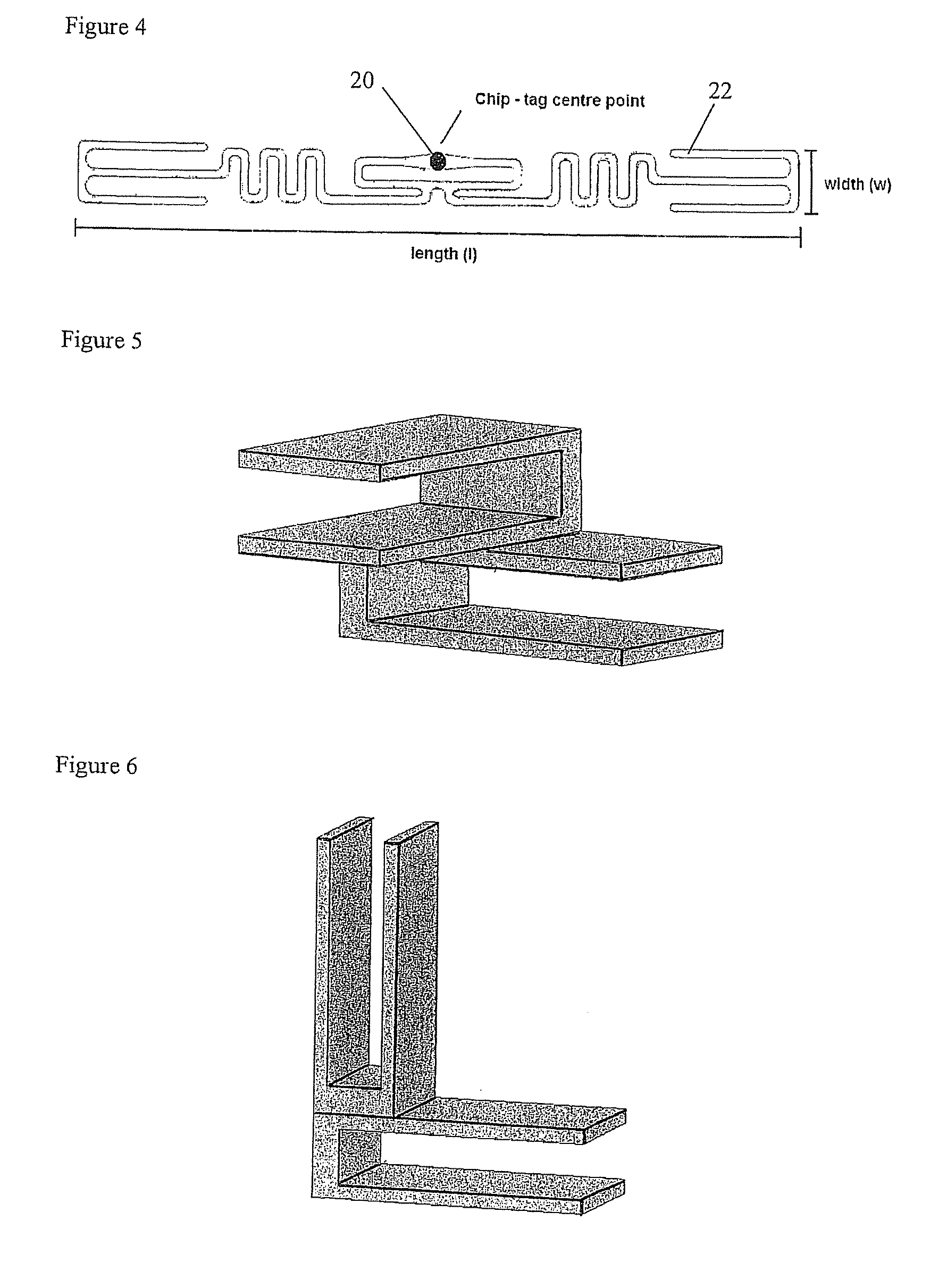Electromagnetic Enhancement and Decoupling
a technology of electromagnetic enhancement and decoupling, applied in the direction of mechanical actuation of burglar alarms, instruments, and using reradiation, etc., can solve the problems of reducing the read range to unacceptable levels, difficult to track metal objects such as cages or containers with uhf rf, and other more expensive location systems
- Summary
- Abstract
- Description
- Claims
- Application Information
AI Technical Summary
Benefits of technology
Problems solved by technology
Method used
Image
Examples
Embodiment Construction
[0089]FIG. 1 shows a side view of a device or decoupler according to the present invention. The decoupler has a layer of metal forming a first conducting side wall 2 spaced apart from and parallel to a another layer of metal forming a second conducting side wall 4. These two side walls enclose a dielectric material 6 which may be air or may be one or more layers of material such as PET. The two conducting side walls define a sub wavelength cavity, one end of which is closed by a conducting end or base portion 8. One or both of the first and second conducting side walls 2, 4 may be continuous with the conducting base portion 8. The end of the cavity opposite the conducting base portion 8 is an open end, i.e. it has no conducting wall. The conducting base portion 8 is the only conducting link between the first and second side walls 2, 4. The decoupler is shown in FIG. 2 in perspective view. For clarity no solid dielectric layer is shown.
[0090] The device is designed to decouple radia...
PUM
 Login to View More
Login to View More Abstract
Description
Claims
Application Information
 Login to View More
Login to View More - R&D
- Intellectual Property
- Life Sciences
- Materials
- Tech Scout
- Unparalleled Data Quality
- Higher Quality Content
- 60% Fewer Hallucinations
Browse by: Latest US Patents, China's latest patents, Technical Efficacy Thesaurus, Application Domain, Technology Topic, Popular Technical Reports.
© 2025 PatSnap. All rights reserved.Legal|Privacy policy|Modern Slavery Act Transparency Statement|Sitemap|About US| Contact US: help@patsnap.com



